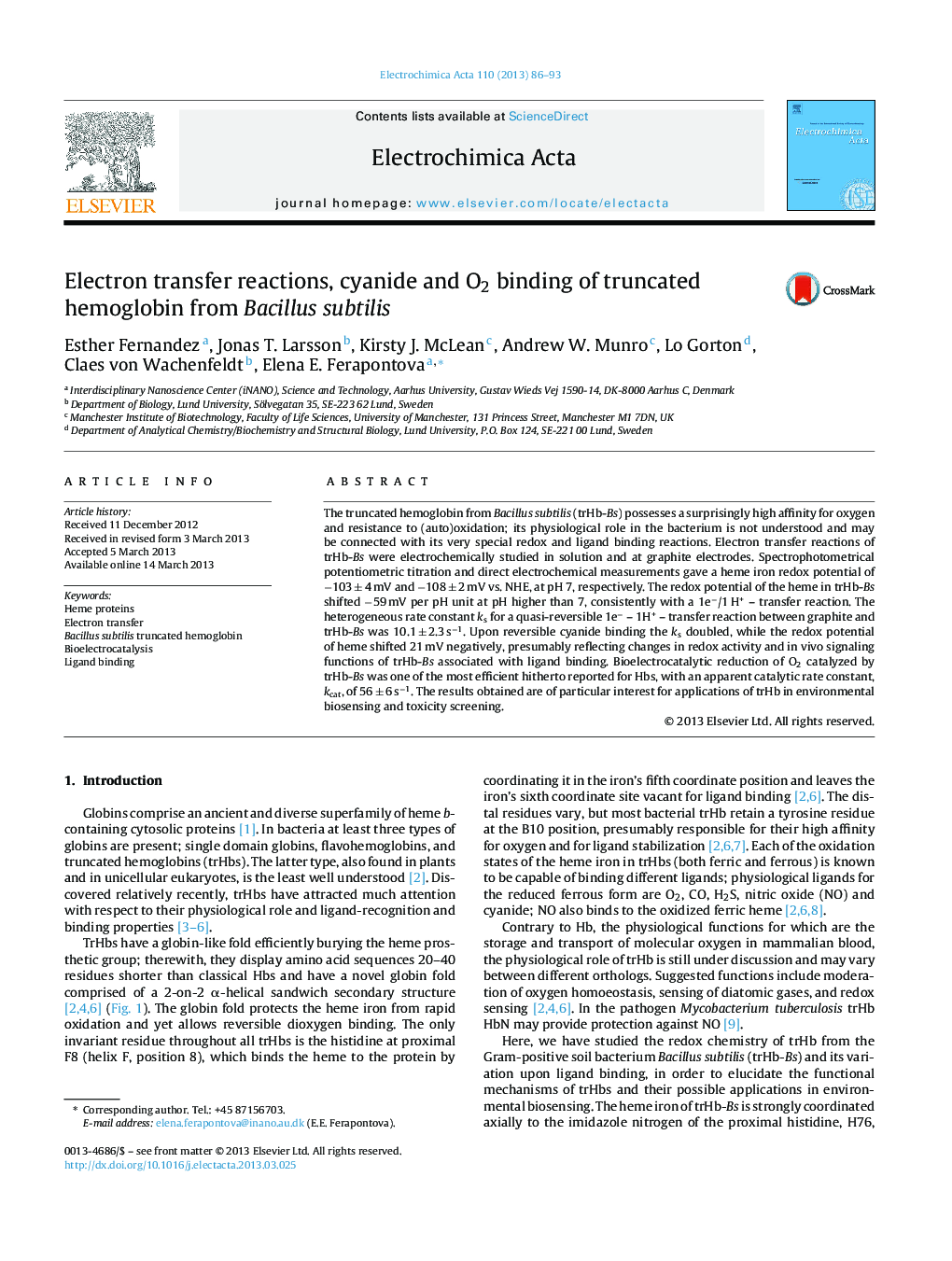| Article ID | Journal | Published Year | Pages | File Type |
|---|---|---|---|---|
| 6615350 | Electrochimica Acta | 2013 | 8 Pages |
Abstract
The truncated hemoglobin from Bacillus subtilis (trHb-Bs) possesses a surprisingly high affinity for oxygen and resistance to (auto)oxidation; its physiological role in the bacterium is not understood and may be connected with its very special redox and ligand binding reactions. Electron transfer reactions of trHb-Bs were electrochemically studied in solution and at graphite electrodes. Spectrophotometrical potentiometric titration and direct electrochemical measurements gave a heme iron redox potential of â103 ± 4 mV and â108 ± 2 mV vs. NHE, at pH 7, respectively. The redox potential of the heme in trHb-Bs shifted â59 mV per pH unit at pH higher than 7, consistently with a 1eâ/1 H+ - transfer reaction. The heterogeneous rate constant ks for a quasi-reversible 1eâ - 1H+ - transfer reaction between graphite and trHb-Bs was 10.1 ± 2.3 sâ1. Upon reversible cyanide binding the ks doubled, while the redox potential of heme shifted 21 mV negatively, presumably reflecting changes in redox activity and in vivo signaling functions of trHb-Bs associated with ligand binding. Bioelectrocatalytic reduction of O2 catalyzed by trHb-Bs was one of the most efficient hitherto reported for Hbs, with an apparent catalytic rate constant, kcat, of 56 ± 6 sâ1. The results obtained are of particular interest for applications of trHb in environmental biosensing and toxicity screening.
Related Topics
Physical Sciences and Engineering
Chemical Engineering
Chemical Engineering (General)
Authors
Esther Fernandez, Jonas T. Larsson, Kirsty J. McLean, Andrew W. Munro, Lo Gorton, Claes von Wachenfeldt, Elena E. Ferapontova,
